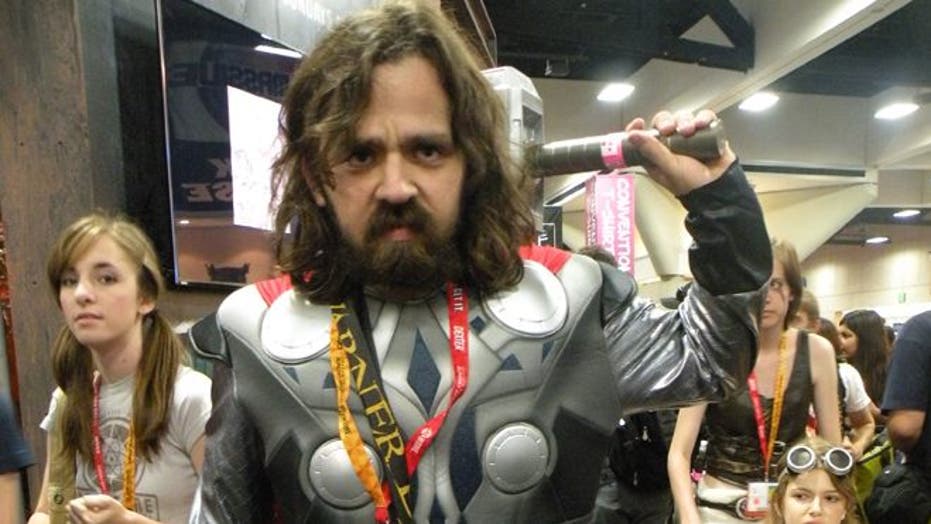With tickets ranging from $40 for a day pass to $175 for a four-day pass, it’s not a small expense for the average family to attend the largest comic convention worldwide—San Diego Comic-Con. But that doesn’t stop Latino fans (con todo familia) from traveling from as far away as Mexico City and U.S. East Caost to San Diego to check out the Con in all of its glory.
Families like the Torres’, from Washington DC, who say they made the trip worth it by all dressing up as Superman, and spending their day at the Convention Center.
Most Latinos say they aren’t at the Con looking for characters that particularly represent their culture, but excited by the prospect of seeing any Latino TV or Hollywood celebs—although very few are in attendance. And most folks didn’t really seem to mind the lack of brown super-heroes. “I just want to see Ironman,” says Erik Zapeda, age 8, from Corona, CA.
In the 15 years since I’ve been coming to Comic-Con the Latino fans have grown. And the ones that do come are diehard—traveling quite a distance to be here.
“In the 15 years since I’ve been coming to Comic-Con the Latino fans have grown. And the ones that do come are diehard—traveling quite a distance to be here,” says creator of La Cucaracha, the first nationally syndicated, politically-themed Latino daily comic of the Los Angeles Times, Lalo Alcaraz.
Alcaraz says he’s not quite as hopeful about the growth of Latino characters in mainstream entertainment. He revealed he is working with a large network on an animated TV pilot with Latino characters. The show is slated to launch next year sometime, and with any luck, he says, he’ll be promoting the show at Comic-Con next year. “It only took 20 years,” Alcaraz says, sarcastically.
While Comic-Con explodes with people in downtown, across town in South East San Diego, Jerry Brice will host and moderate a panel of animation artists and business professionals for the children and teenagers of the inner city communities called “Counter-Con”.
“This is the first time this event will happen, and it’s not a Comic-Con event—but that’s partly the point. San Diego Comic-Con is an exclusive event that is hard for even professional artists to get into. This panel is an effort to extend the excitement of Comic-Con into the neglected neighborhoods of South East San Diego, and inspire a child to dream, and to let them know that we do, in fact, care about them,” says Brice.
He said the goal of the event is to introduce at least 200 low-income kids to the possibility of pursuing a career in the animation, comic, or game art fields.
“Guest panelists, whose roads to success started in similar circumstances, will tell the kids how they got to be a pro, and let them know what it took to overcome obstacles, and to achieve their goals in a very competitive and specialized talent-based industry,” Brice says.
The effort was born of a rant on Facebook about the lack of diversity at Comic-Con. Of the grassroots event, Alcaraz says, “I can’t believe nobody’s done this before. It’s nice to reach out to them (low-come kids) they’re certainly underserved, and I’m pretty sure they’re not at Comic-Con.”
Comic-Con is a circus unlike any other. Oceans of people walk together past booths selling everything from limited-edition toys, to vintage comic books, to art, clothing, and autograph signings. People stand for literally hours to catch a glimpse of their favorite TV personalities or free give-aways, and costumed characters are on the ready for photo ops.
Perfectly designed for the kid at heart, the convention is one of America’s greatest melting pots. No one can really feel left out, because no one is really in.
“It’s a convention,” says Leslie Combemale owner of the ArtInsights Animation and Film Art Gallery in Reston, VA. “Of socially awkward people all coming together to for one big sci-fi geek fest.”

